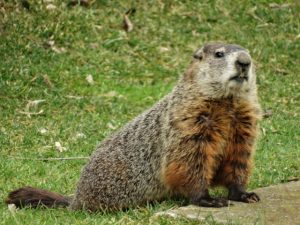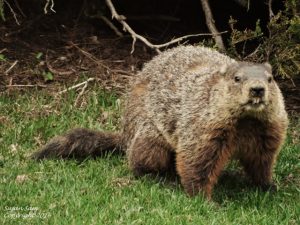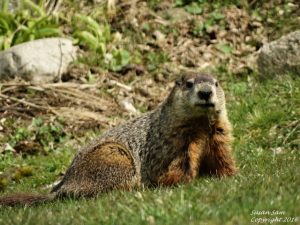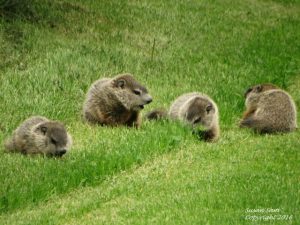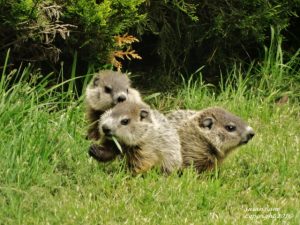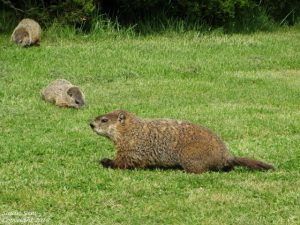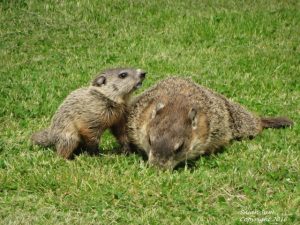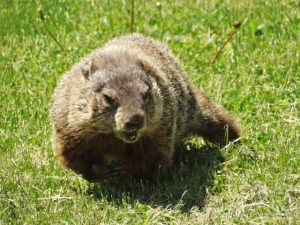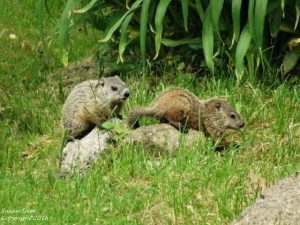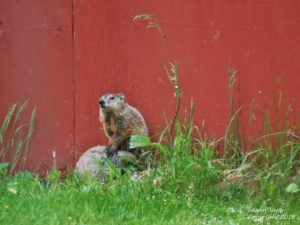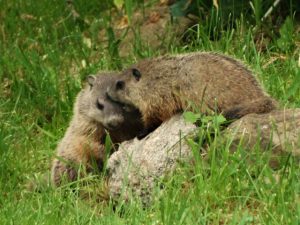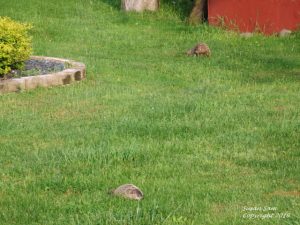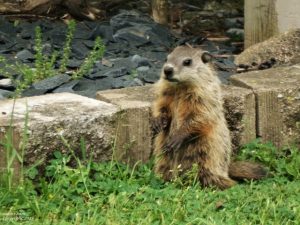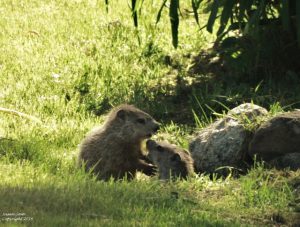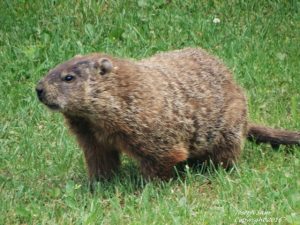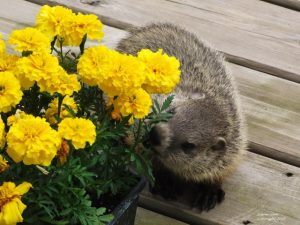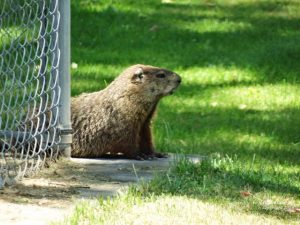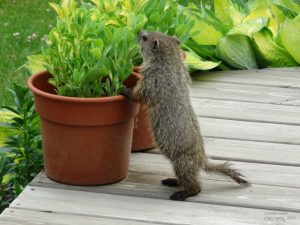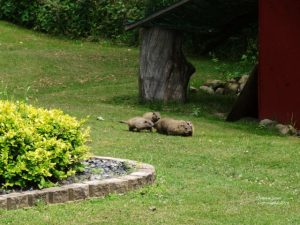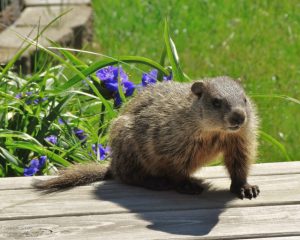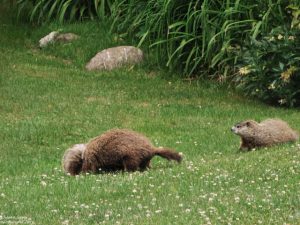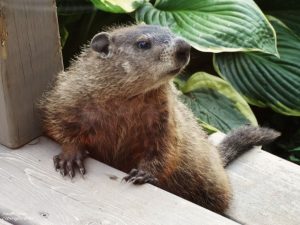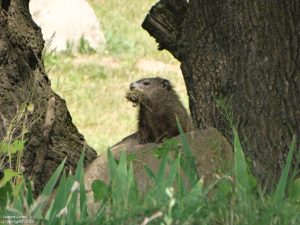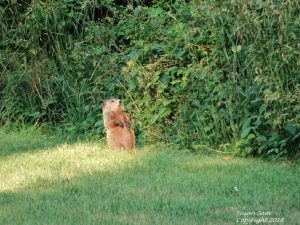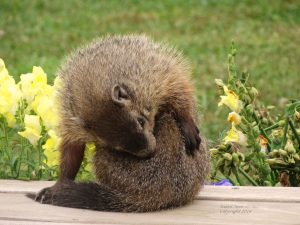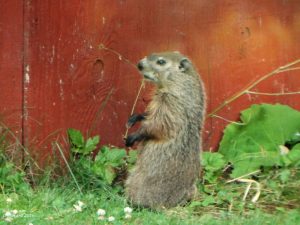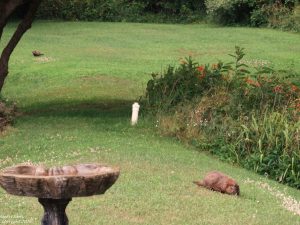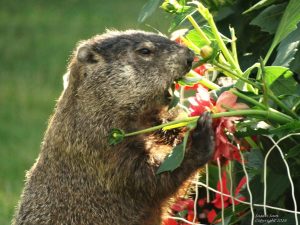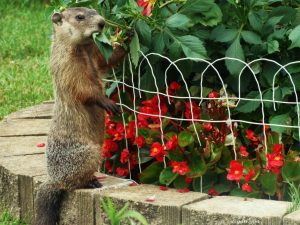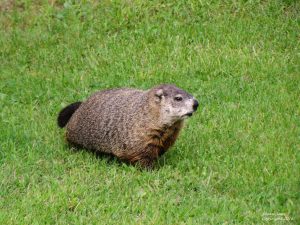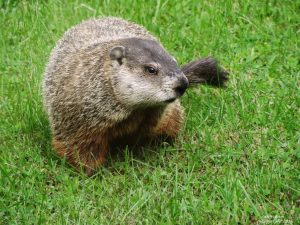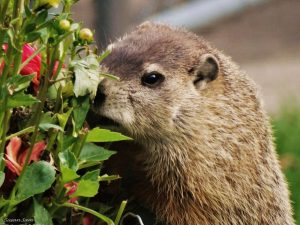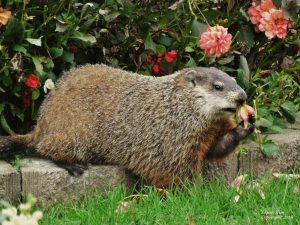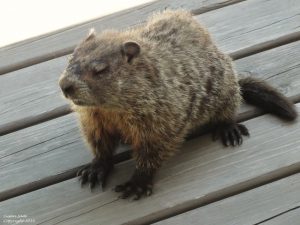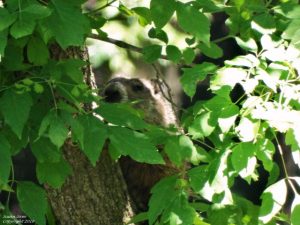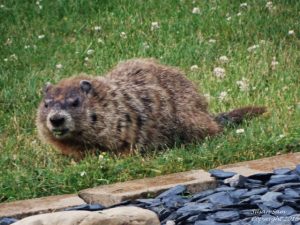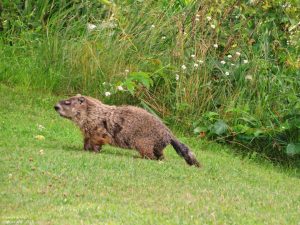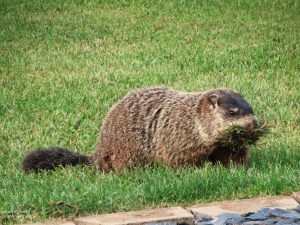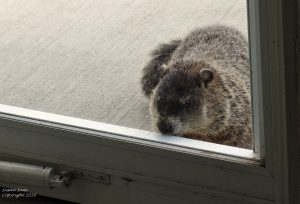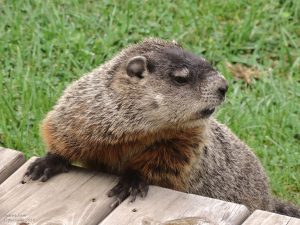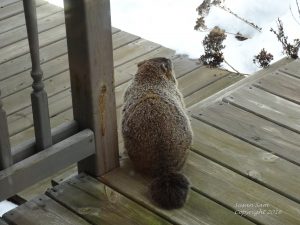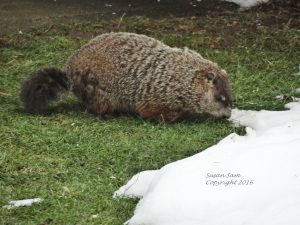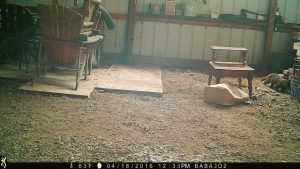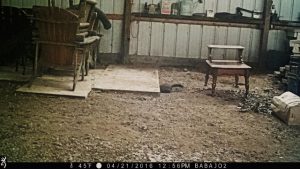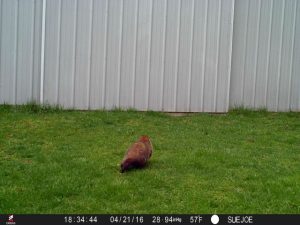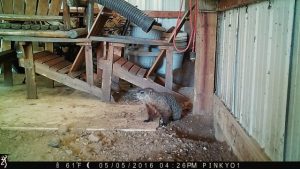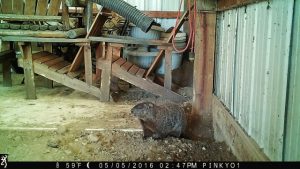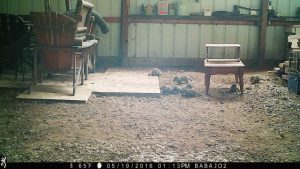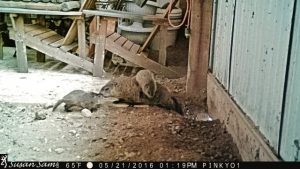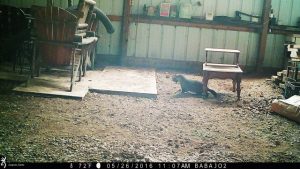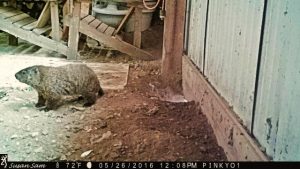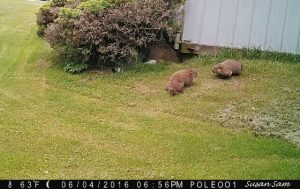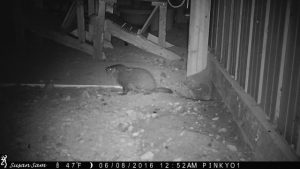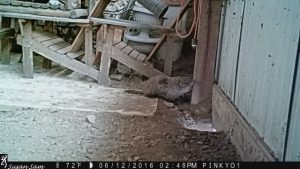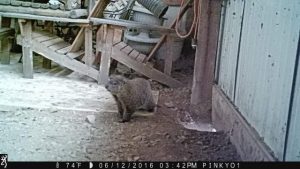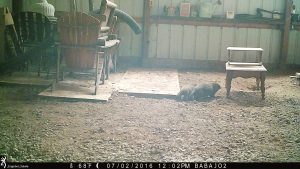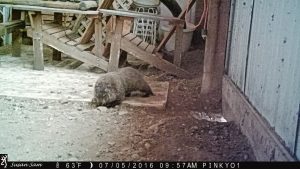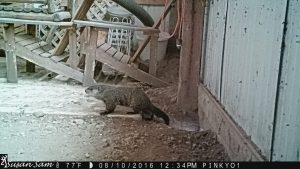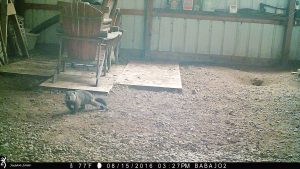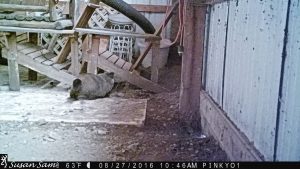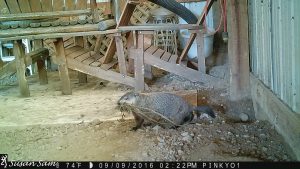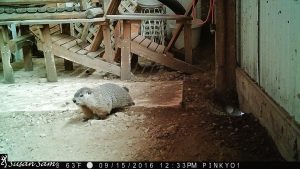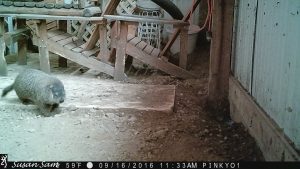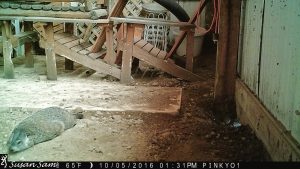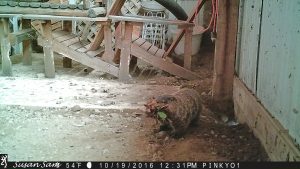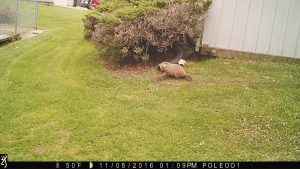Welcome to Woodchuck Wonderland
2016 Photos and Review
March-May. Raggedy and Heidi are with us again this year. We installed trail cameras inside and outside the barn to capture their activity. With these new observation aids, Raggedy was documented in the barn during the mating period, during Heidi’s pregnancy, and after their eight babies emerged from the natal burrow.
Within days of the baby’s May 15th emergence, they began exploring. Like others before them, they were drawn to the Rock Garden. The rocks and vegetation provide camouflage and ideal locations to eat, play, and hide. A small drain tube offers an additional place to take cover. By May’s end, the chucklings had traveled to the shed and as far away as Burrow #5, which is in a wooded area about 175 feet from their birth den.
June. We’ve gained significant insight into groundhog behavior with tens of thousands of trail camera images. An unusual activity captured via the trail camera is chuck activity after midnight, such as around 1:00 am.
On June 23rd, Heidi led three of the eight babies from Burrow #5 to the front deck burrow location. Raggedy watched over them and the dens nearer to the house, showing another example of male involvement in raising the young. Heidi returned to the other chucklings in the Burrow #5 area. The behavior between adult males and the young differs from what we observe between them and their mothers. We suspect that the time spent with the male assists in lessening the maternal bonds and aids in preparing the chucklings for dispersal. To view video footage of males interacting with the young, check out “Groundhogs, Male-Juvenile (Baby) Interactions.”
The arrival of a new woodchuck occurred in June. Confirmed to be a male, we named him Fred. He’s identifiable by the patchy pattern of his fur. He stumbles periodically but is capable of climbing trees. Fred’s role in the family is uncertain.
July-November. Heidi’s presence after bringing the babies to Raggedy on June 23rd was infrequent. We last saw her at the end of August. Our resident female since 2014, Heidi has been our longest resident female since Wilhelmina (2003-2011).
Raggedy and Fred continued to be seen regularly and documented into October, along with two juveniles, Ira and Reggie. Whether Fred was a second mate to Heidi is unknown, but he was involved with the family. His activities included assisting in burrow maintenance and engaging in playful behavior with at least one juvenile. We stopped seeing Raggedy and Ira in October but continued to see Fred and Reggie. On October 18th and 19th, Fred spent hours bringing in leaves for one of two barn burrows.
By November, Reggie was the only chuck we continued to see. He was last observed on November 8th when he made multiple trips to the barn carrying leaves for the burrow. The barn burrow used by Heidi, and others, didn’t appear to be in use. The second barn burrow, the one Fred brought leaves for, is being used by Reggie. We believe Reggie is hibernating in this burrow.
December Update: We were astonished to see Fred on our back deck on Christmas Eve! A review of trail camera photos in the barn gives strong evidence there was a burrow problem which Fred attended to on the 23rd and 24th. It appears he has resumed hibernating. Early awakening is potentially harmful to groundhogs because it requires a lot of energy. Groundhogs use stored fat over winter to survive. When fat is gone, their muscles provide fuel which is harmful to them. An additional concern for early awakening is predators. Groundhogs are more visible in the snow, and the holes they use to escape are covered over.
2016 Photos
June
July-November
Fred
Trail Capture
